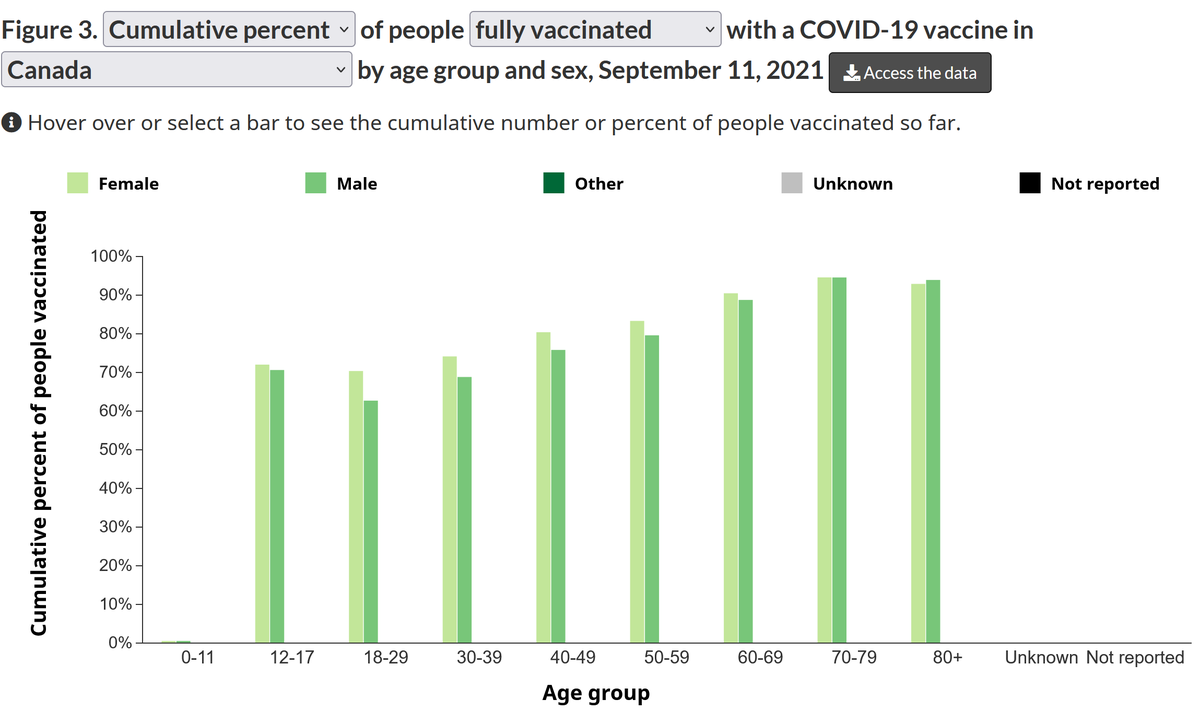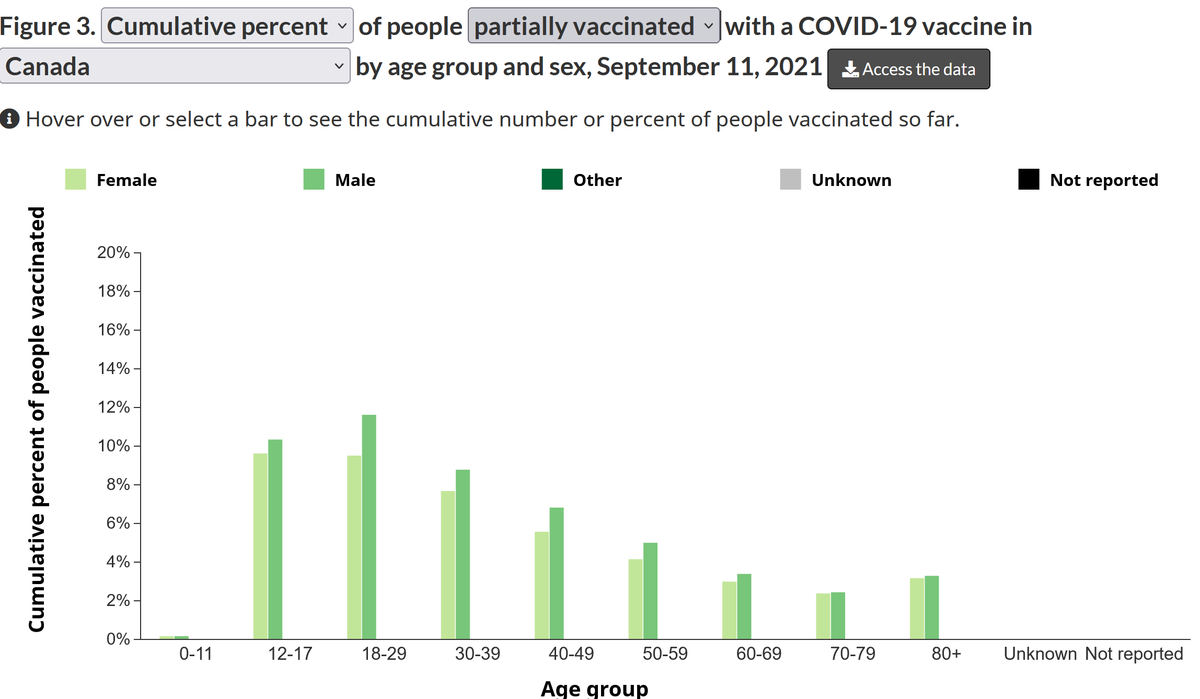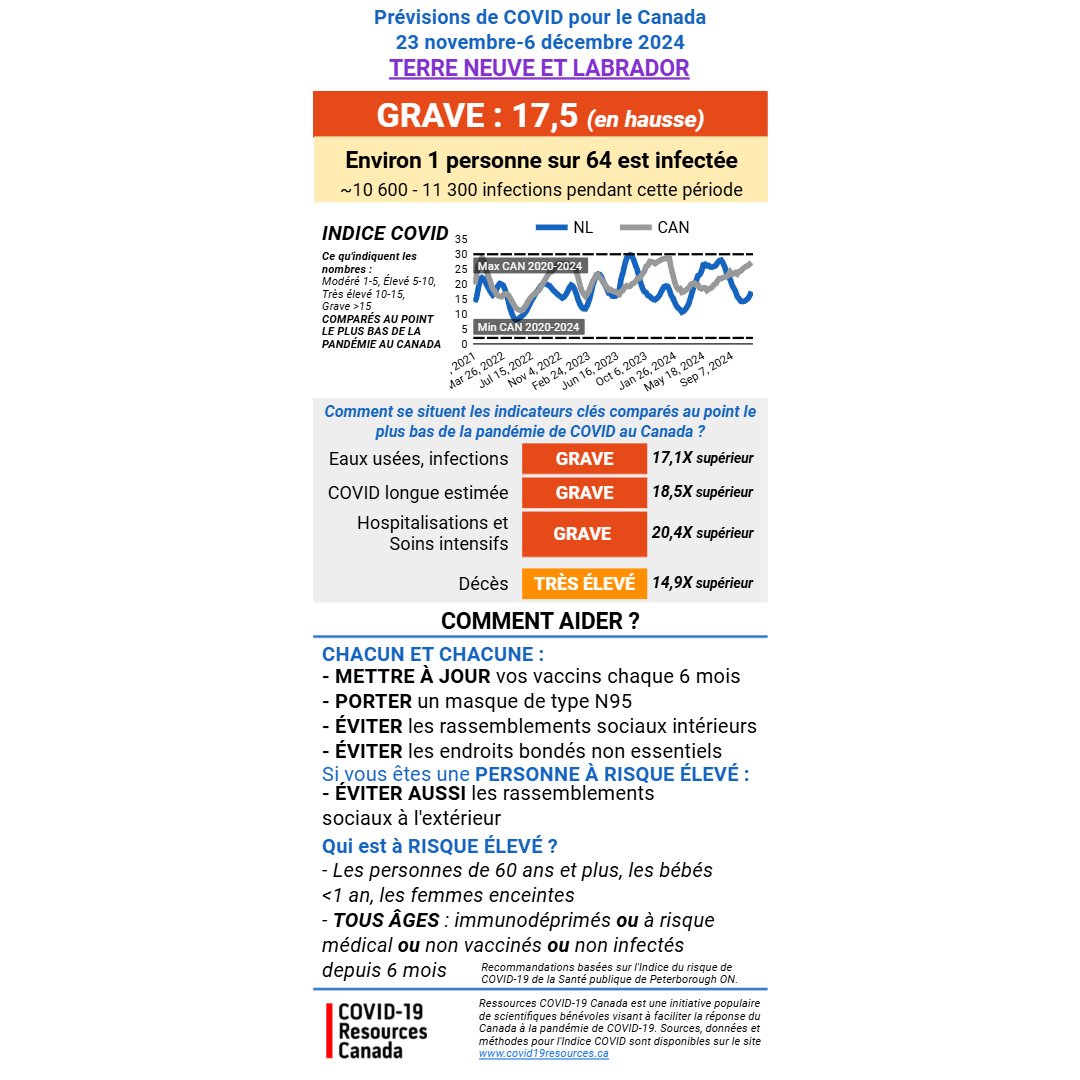There's been quite a concerning vaccination gap emerging for Canadian men (undervaccinated) compared to women, with about 1 million fewer men fully vaccinated than women.
The good news this week is that first and second shot rates for men are clearly speeding up.
The good news this week is that first and second shot rates for men are clearly speeding up.
https://twitter.com/MoriartyLab/status/1439197288497299458
Here are the rates of full vaccination for Canadian men, women, girls, boys
12-17: 70.2% (M), 71.6% (F)
18-29: 62.3% (M), 70.0 (F)
30-39: 68.4% (M), 73.8% (F)
40-49: 75.4% (M), 80.0% (F)
50-59: 79.2% (M), 82.9% (F)
60-69: 88.4% (M), 90.1% (F)
70+: M, F similar (>93%)
12-17: 70.2% (M), 71.6% (F)
18-29: 62.3% (M), 70.0 (F)
30-39: 68.4% (M), 73.8% (F)
40-49: 75.4% (M), 80.0% (F)
50-59: 79.2% (M), 82.9% (F)
60-69: 88.4% (M), 90.1% (F)
70+: M, F similar (>93%)

Here's the graph for partial vaccination, from @GovCanHealth .
You can see that more men than women are now getting their first shots, in all age groups except people 70+.
This is good news.
You can see that more men than women are now getting their first shots, in all age groups except people 70+.
This is good news.

@GovCanHealth The BAD news is that % of people 50+ fully vaccinated is increasing far too slowly.
It's slowed considerably (20%) since the week of Aug 28-Sep 4.
The greatest slowing is among people 80+, as some regions reach 100% vax in this age group but others lag badly (ON, AB, SK, NUV).
It's slowed considerably (20%) since the week of Aug 28-Sep 4.
The greatest slowing is among people 80+, as some regions reach 100% vax in this age group but others lag badly (ON, AB, SK, NUV).

@GovCanHealth Unvaccinated people 50+ will account for the large majority of COVID-19 deaths to come over the next 1-2 years, as we're all exposed to SARS-Cov-2.
Since current vaccines reduce but don't eliminate transmission, it's URGENT that we vaccinate 100% of those at greatest risk.
Since current vaccines reduce but don't eliminate transmission, it's URGENT that we vaccinate 100% of those at greatest risk.

@GovCanHealth Here are the estimated vaccine-preventable #COVID19 deaths that may happen in different Canadian regions over the next year or two.
CAN 37,000
AB 5,300
BC 5,100
MB 400
NB 1,100
NL 480
NWT 20
NS 800
NUV 10
ON 18,800
PEI 70
QC 3,500
SK 1,500
YK 20
CAN 37,000
AB 5,300
BC 5,100
MB 400
NB 1,100
NL 480
NWT 20
NS 800
NUV 10
ON 18,800
PEI 70
QC 3,500
SK 1,500
YK 20

Estimated future vaccine-preventable deaths among unvaccinated people in each age group
12-17: 22 (11M, 11F)
18-29: 188 (106M, 79F)
30-39: 532 (296M, 242F)
40-49: 1,255 (692M, 573F)
50-59: 3,821 (2,087M, 1,738F)
60-69: 6,616 (3,591M, 3,178F)
70+: 24,748 (10,354M, 14,394F)
12-17: 22 (11M, 11F)
18-29: 188 (106M, 79F)
30-39: 532 (296M, 242F)
40-49: 1,255 (692M, 573F)
50-59: 3,821 (2,087M, 1,738F)
60-69: 6,616 (3,591M, 3,178F)
70+: 24,748 (10,354M, 14,394F)

• • •
Missing some Tweet in this thread? You can try to
force a refresh















